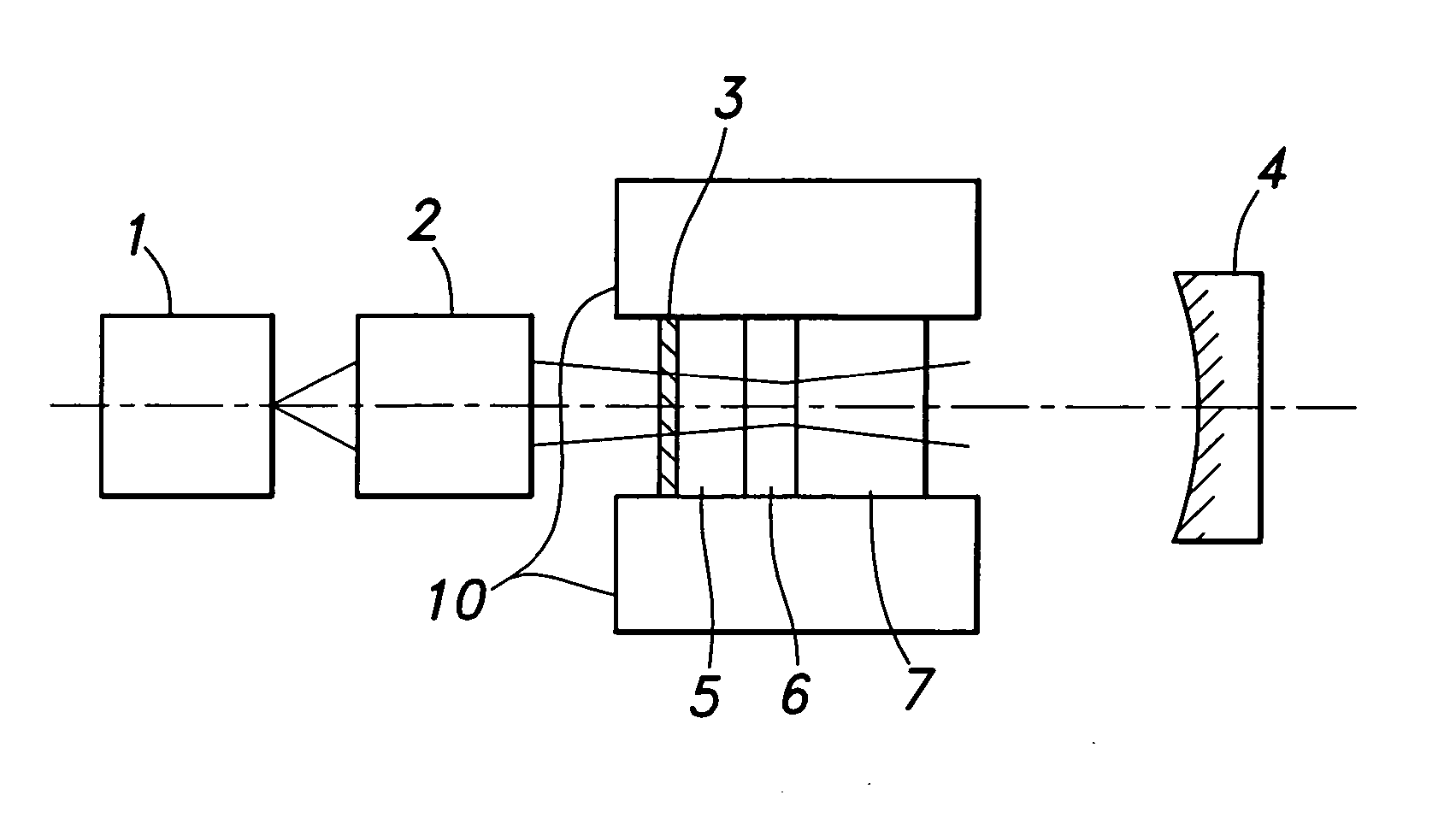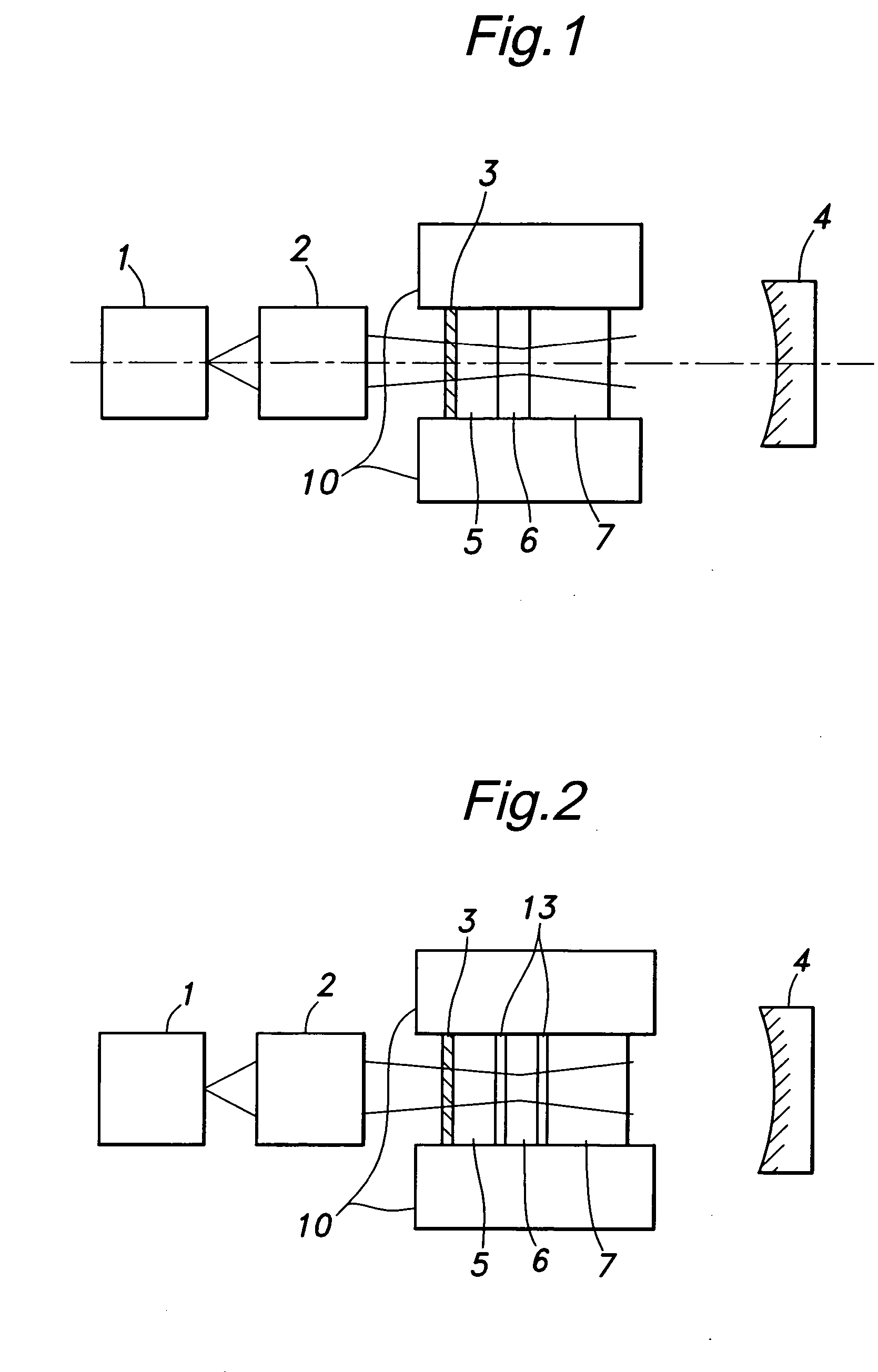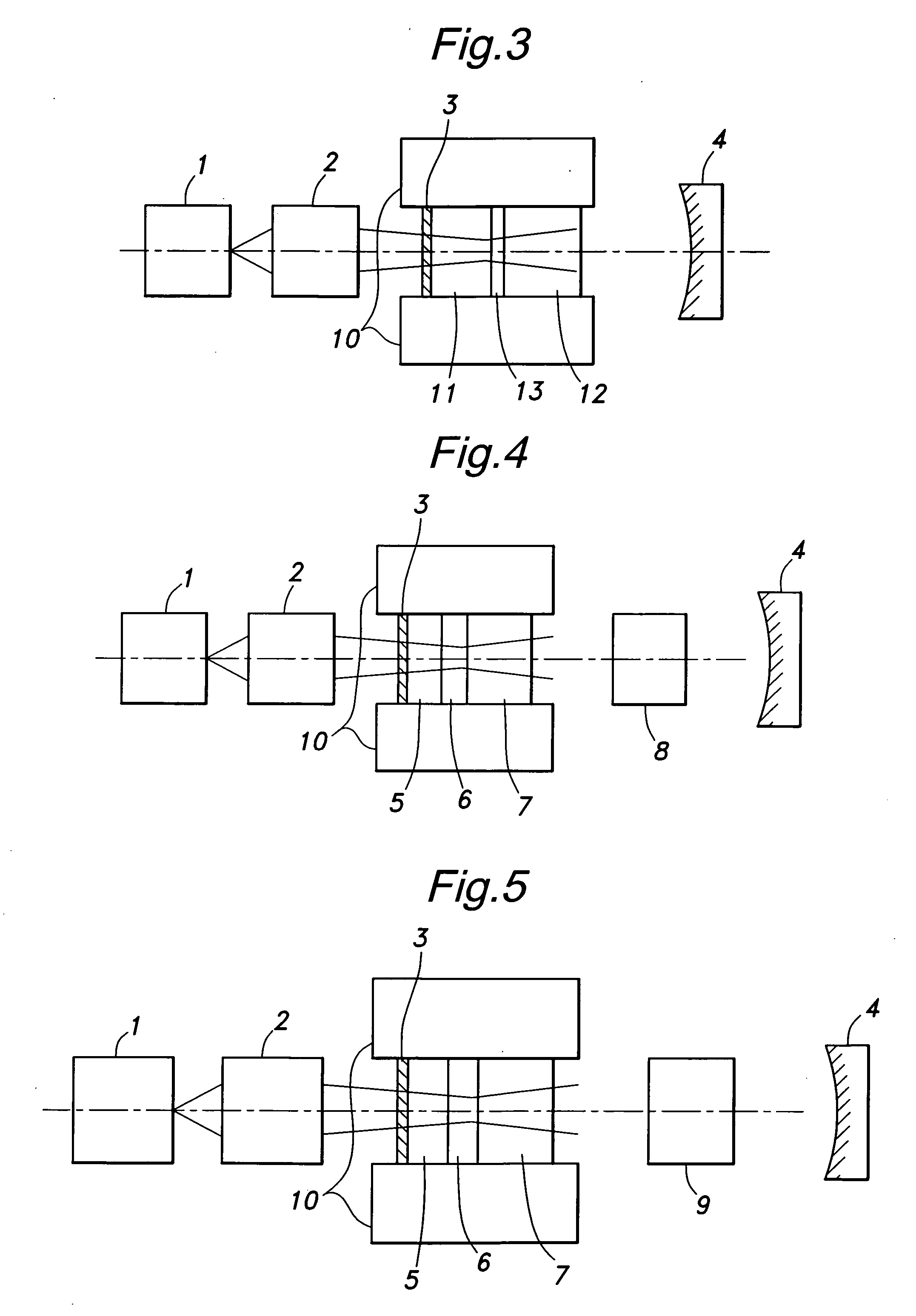Solid state laser using a semiconductor pumping light source
a solid-state laser and semiconductor technology, applied in the direction of laser cooling arrangements, laser details, active medium materials, etc., can solve the problems of laser crystal damage, laser crystal destruction, excessive thermal stress, etc., to achieve the effect of maximizing laser output, increasing tolerance for high-power pumping light, and enhancing the present invention
- Summary
- Abstract
- Description
- Claims
- Application Information
AI Technical Summary
Benefits of technology
Problems solved by technology
Method used
Image
Examples
first embodiment
[0049]FIG. 1 shows a first embodiment of the present invention in the form of a laser diode pumped solid state laser. The pumping source of this laser consists of a laser diode 1 having a continuous output of 40 W at 809 nm, and has a light emitting area which is 10 mm wide and 1 μm high. The output of this laser diode is focused by an optical assembly 2 similar to that disclosed in U.S. Pat. No. 5,805,748 into a beam of 600 μm square.
[0050] The first laser crystal 5 consists of a Nd:YVO4 crystal having a Nd3+ concentration of 0.25 atomic % and 0.9 mm long in the axial direction. The end surface of the first laser crystal 5 adjacent to the optical assembly 2 is provided with a dielectric multi-layer film mirror 3 which has a reflectivity of no less than 99% with respect to the 1,064 nm laser output and no more than 3% with respect to the 809 nm incident pump radiation. The second laser crystal 6 consists of a Nd:YVPO4 crystal having a Nd3+ concentration of 0.5 atomic % and 0.5 mm l...
second embodiment
[0056] Referring to FIG. 2 showing the second embodiment of the present invention, the laser diode 1 serving as a pumping light source, pumping optical system 2 and output mirror 4 are similar to those of the first embodiment. The dimensions of the first laser crystal 5 are similar to those of the counterpart in the first embodiment. The dielectric multi-layer film 3 on the side of the pumping optical system 2 is similar to that of the first embodiment, but the opposite face of the first laser crystal 5 is coated with a dielectric layer having a low reflectivity for the Nd:YVO4 laser at 1,064 nm.
[0057] The second laser crystal 6 is similar to that of the first embodiment in terms of dimensions and Nd3+ concentration. However, the two ends surfaces through which the pumping light passes are each coated with a dielectric layer having a low reflectivity for both the Nd:YVO4 output laser at 1,064 nm and the pumping laser at 809 nm. The second laser crystal 6 is spaced from the first la...
third embodiment
[0061] Referring to FIG. 3 showing the third embodiment of the present invention, the laser crystal in this case consisted of two individual laser crystals 11 and 12 made of Nd:YVO4 crystals. The face of the first laser crystal 11 closer to the pumping optical system 2 was provided with a dielectric multi-layer film mirror 3, and the second laser crystal 12 was spaced from the first laser crystal 11 by a gap 13.
[0062] The first laser crystal 11 had a Nd3+ concentration of 0.2 atomic %, and was 1.5 mm long. The face of the first laser crystal closer to the pumping optical system was provided with a dielectric multi-layer film mirror 3, and the opposite face was coated with a dielectric layer having a low reflectivity for both the Nd:YVO4 laser at 1,064 nm and pumping laser at 808 nm.
[0063] The second laser crystal 12 had a Nd3+ concentration of 1.1 atomic %, and was 3.5 mm long. The two opposite faces through which the pumping laser and output laser respectively pass through were e...
PUM
 Login to View More
Login to View More Abstract
Description
Claims
Application Information
 Login to View More
Login to View More - R&D
- Intellectual Property
- Life Sciences
- Materials
- Tech Scout
- Unparalleled Data Quality
- Higher Quality Content
- 60% Fewer Hallucinations
Browse by: Latest US Patents, China's latest patents, Technical Efficacy Thesaurus, Application Domain, Technology Topic, Popular Technical Reports.
© 2025 PatSnap. All rights reserved.Legal|Privacy policy|Modern Slavery Act Transparency Statement|Sitemap|About US| Contact US: help@patsnap.com



